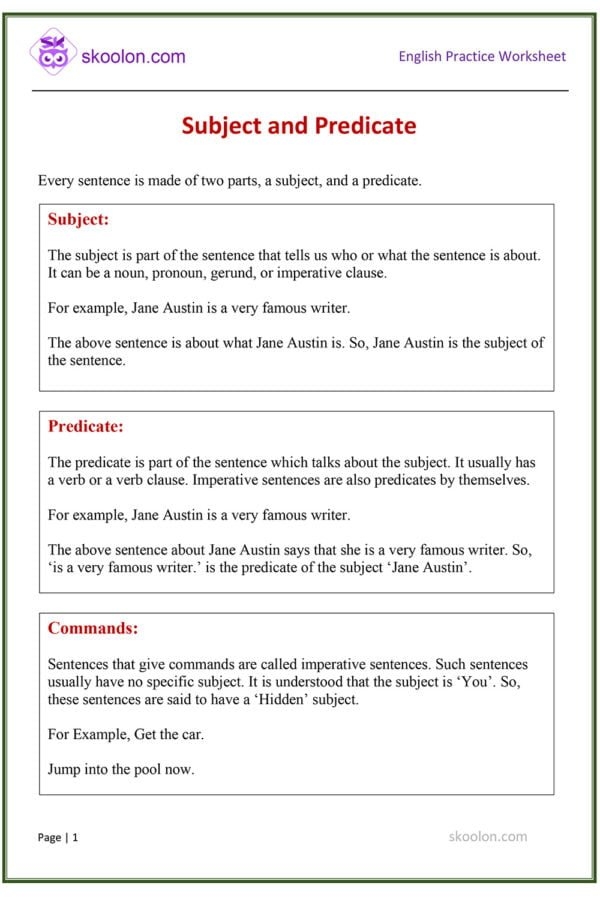Grammar is an essential aspect of any language, including English. It provides the rules and structure needed to communicate effectively. One of the fundamental concepts in English grammar is the subject and predicate. Understanding these elements is crucial in forming clear and coherent sentences.
When we talk about subject and predicate, we are referring to the two main parts of a sentence. The subject is the part of the sentence that tells us who or what the sentence is about. It is usually a noun or pronoun that performs the action in the sentence. On the other hand, the predicate is the part of the sentence that contains the verb and provides information about the subject.
Grammar: Subject and Predicate
In English grammar, the subject and predicate work together to form complete sentences. The subject is the main focus of the sentence, while the predicate provides additional information about the subject. For example, in the sentence “The cat is sleeping,” “The cat” is the subject, and “is sleeping” is the predicate.
It is important to note that the subject and predicate must agree in number. This means that if the subject is singular, the verb in the predicate should also be singular. Similarly, if the subject is plural, the verb should be plural as well. For example, in the sentence “She walks to school,” the singular subject “She” is paired with the singular verb “walks.”
Understanding the relationship between the subject and predicate is crucial in forming grammatically correct sentences. By identifying the subject and predicate in a sentence, you can ensure that your writing is clear and coherent. Practice with different examples to master this fundamental concept in English grammar.
In conclusion, the subject and predicate are essential components of English grammar that work together to form complete sentences. By understanding the roles of the subject and predicate, you can improve your writing skills and communicate more effectively. Remember to pay attention to agreement in number between the subject and predicate to avoid common grammatical errors.
